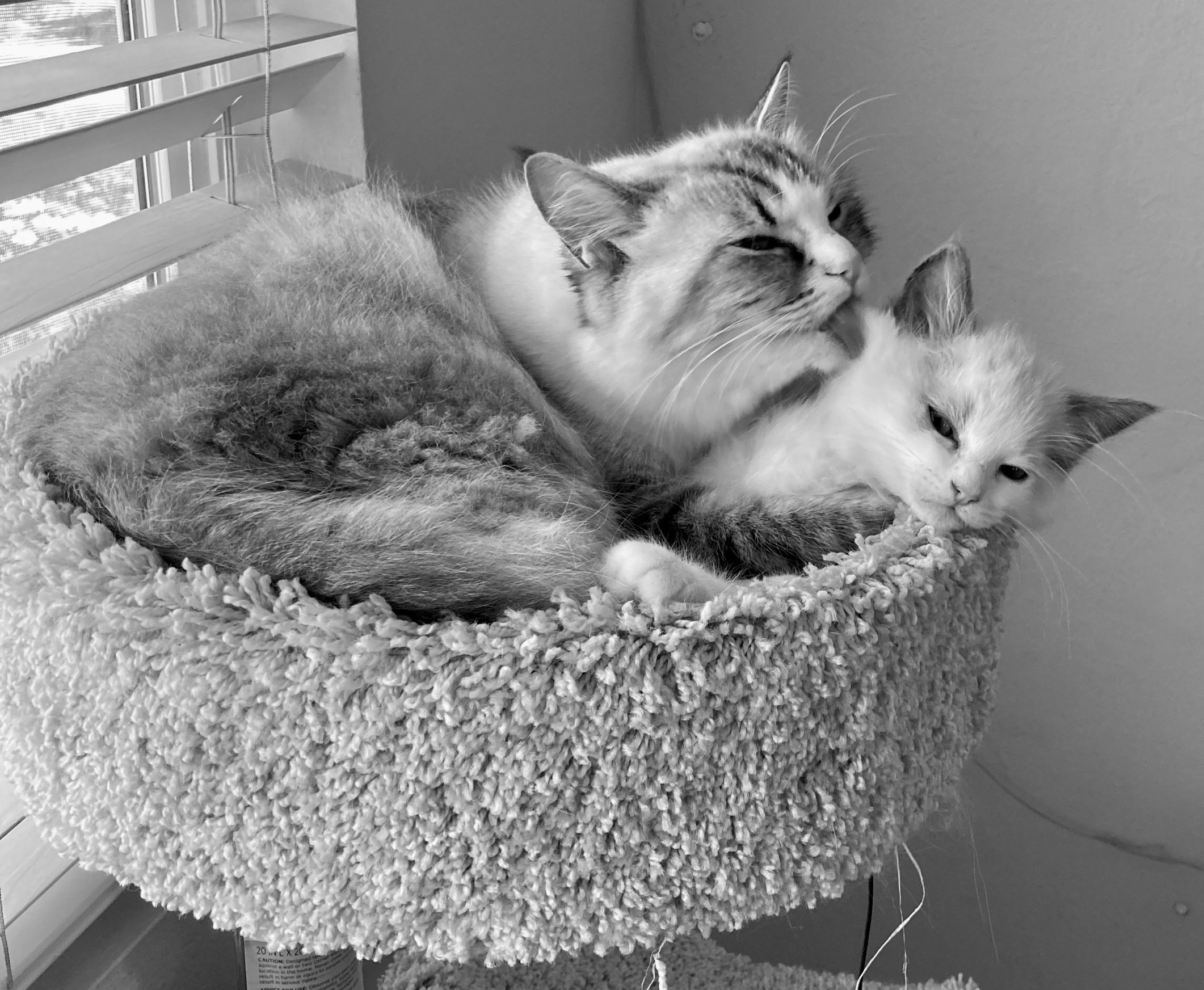Introducing a New Kitten To A Resident Cat: A Step-by-Step Guide To Help Ensure A Smooth Introduction & Life Long Friendship
A week earlier, Mushu - pictured left, a purebred Ragdoll cat grooming her newest kitten friend, Snowball, right were not so sure about each other. In fact, bringing a new Ragdoll cat or kitten home where existing cats already live calls for strategic planning. Introducing cats to each other or to a new environment requires patience, careful planning, and understanding of feline behavior. Danu Ragdolls has experience helping their clients with this important phase of adoption. Our focus on delivering the best experience to our new cat families helps create that positive bond between our kittens and their future homes.
Introducing a New Kitten To A Resident Cat…A step-by-step guide to help ensure a smooth introduction and life long friendship.
Step 1: Prepare a Safe Space
Designate a Separate Room: Prepare a quiet, enclosed room for the new cat with all necessary resources (food, water, litter box, bed, toys).
Set Up Essentials: Include a litter box, food and water bowls, scratching post, and some hiding spots.
Pheromone Diffusers: Consider using feline pheromone diffusers like Feliway to help reduce stress.
Step 2: Initial Separation
Confine New Cat: Place the new cat in the designated room for a few days to a week. This allows the new cat to get used to the environment without being overwhelmed.
Keep Resident Cat’s Routine: Maintain the current cat’s routine to reduce stress.
Step 3: Scent Exchange
Swap Bedding: Exchange bedding between the cats to help them get used to each other’s scent.
Scent Rubbing: Gently rub a cloth on one cat and place it near the other cat’s space. Repeat this process with both cats.
Step 4: Controlled Visual Introduction
Use a Barrier: After a few days, allow the cats to see each other through a barrier (like a baby gate or cracked door). Keep the sessions short.
Observe Reactions: Watch their body language. Calm curiosity is a good sign, while hissing and growling indicate they need more time.
Step 5: Positive Association
Feed Near the Barrier: Place food bowls on each side of the barrier. Gradually move the bowls closer to the barrier over time.
Play Together: Engage the cats in play sessions near the barrier to create positive experiences associated with each other.
Step 6: Supervised Interaction
Short Supervised Meetings: Once the cats seem calm seeing each other through the barrier, allow short supervised interactions in a neutral space. Keep these sessions brief and positive.
Use Treats and Praise: Provide treats and praise to both cats to encourage good behavior.
Step 7: Gradual Increase in Time Together
Extend Interaction Time: Gradually increase the duration of their time together as long as they remain calm and non-aggressive.
Monitor Behavior: Always supervise interactions and separate the cats if any signs of aggression appear.
Step 8: Full Integration
Increase Freedom: If the cats interact peacefully, allow them more freedom together. Continue to monitor their behavior.
Multiple Resources: Ensure there are multiple food, water stations, and litter boxes to prevent resource guarding.
Step 9: Maintain Harmony
Provide Enrichment: Keep both cats mentally and physically stimulated with toys, climbing structures, and regular playtime.
Regular Vet Check-ups: Ensure both cats are healthy, as health issues can sometimes cause behavioral problems.
Tips for Success
Patience is Key: Take your time and don’t rush the process. Each step might take days or weeks depending on the cats' temperaments.
Observe Body Language: Look for signs of stress or aggression (e.g., hissing, growling, swatting) and adjust the pace accordingly.
Separate if Needed: If conflicts arise, separate the cats and go back to the previous step, progressing more slowly.
By following these steps and ensuring a controlled, gradual introduction, you can help foster a harmonious relationship between the cats.
Chewy’s clever, Chewtorial on How To Introduce Cats is succinct video providing an overview of the process. Another and more in depth version by Jackson Galaxy showcases play by play analysis of footage from a friend Introducing a Cat to a New Kitten. Jackson does a great job of describing cat body language, human’s projecting their own emotional experience into the situation, and provides sound advice for anyone desiring a smooth introduction between a resident cat and a new kitten.
